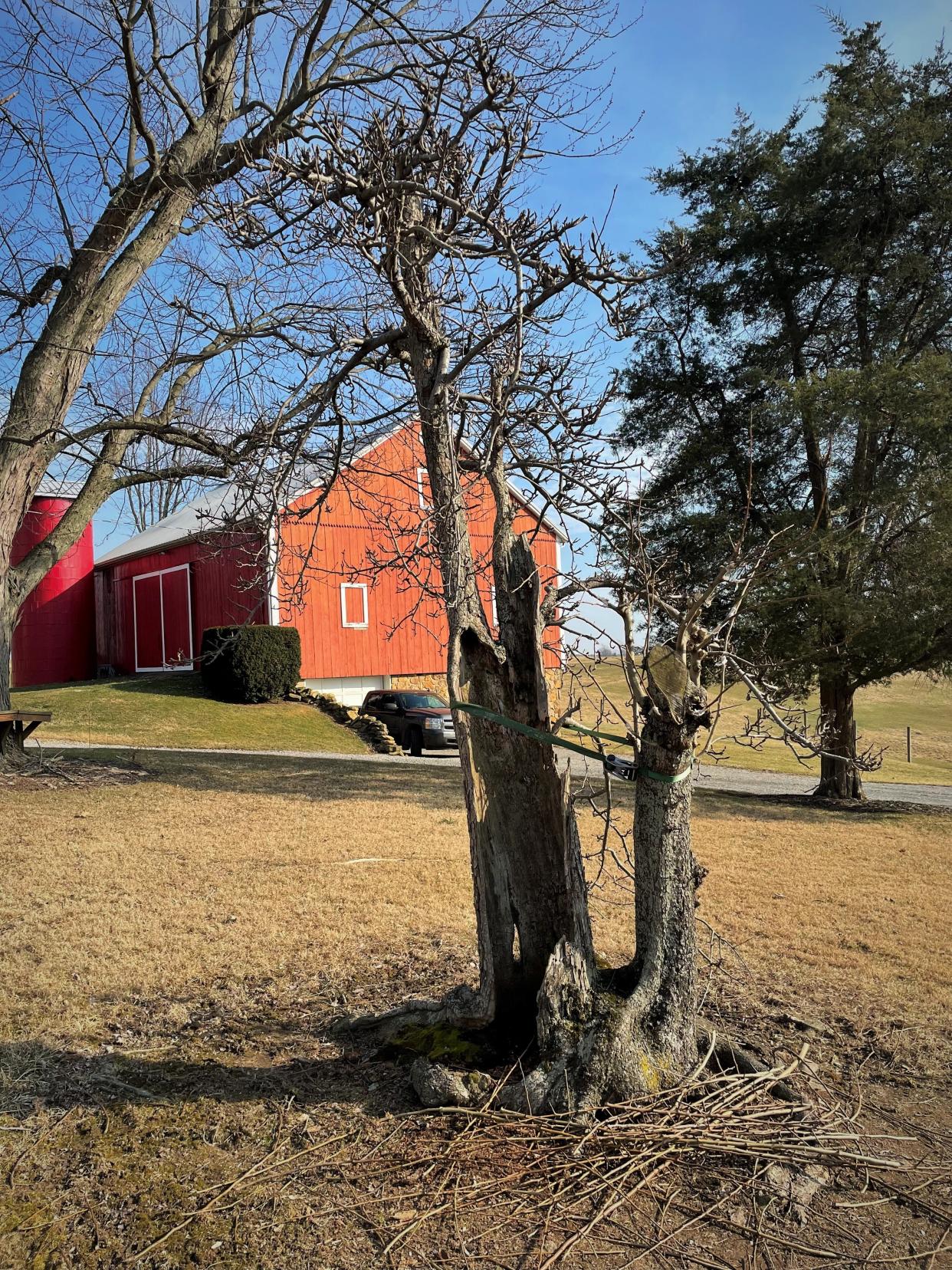Old House Handyman: What to do on a 70-degree day in March? Prune trees and pull weeds, of course!

Giddy wouldn’t begin to describe the thought of a 70-plus-degree day in March.
So many things to do, so few hours on any day in March, but we did our best to fill all of them on March 5.
The workday started at 6 a.m. with clouds and a chill, but soon the sun was shining and the temperature was rising.
Daughter No. 3 and I spent the early, chilly hours cleaning up brush. She hacked away at invasive honeysuckle and overgrown blackberry bushes. I worked on fence lines crowded with multiflora rose and other weeds.
The ash goes crash
Then we both tackled the ash trees that continue to fall into our family farm fields from the fence rows. How could so many still be with us? Most were killed years ago by emerald ash borers, the shiny little bug from China that The Dispatch prophetically said in 2003 would kill virtually every ash tree in North America.

The stubborn among those ash trees died but refused to fall, and now are finding themselves no match for even the slightest southwest wind. In early March, the fallen presented an early morning workout and future fuel for the fireplace.
Storm doors: Old House Handyman: Shopping for new storm doors a perfect way to spend a winter's day
Most shatter when they hit the ground. Lucky for us, one fell whole. We dragged it to a spot near our firewood pile, sharpened up the chainsaws and made quick work of the old tree, turning the gray beastly trunk into stubby, fireplace logs in under an hour.
After a lunch of Swiss cheese and jerky from Winesburg Meats, we basked in the glory of a world filled with sunshine and temperatures so warm that we were down to T-shirts. Glorious!
Pruning and praying for pears
My daughter had her eye on rebuilding a stone wall that has been sagging and mysteriously tossing off rocks. I was determined to start pruning fruit trees, a task that in recent years has grown exponentially beyond the number of trees I have planted. That’s because they were twigs when I planted them, and now as mature trees, each offers an uncounted number of branches to prune.
“What were you thinking when you planted these?” I mutter under my breath — and my children blurt out whenever I ask them to help with pruning.
With limited time on that stunning day, I focused on the oldest pear tree. To call it a tree is generous. It is bark and cambium around a thin skeleton of a trunk, one so hollowed out that only half of the bark and skin still exist. There is no heartwood core, only half of an outer shell holding up a crown that inexplicably has produced a bounty of tasty winter pears each year for much of the past century.
Garage door: Old House Handyman: Garage door project opens a portal to the past
My goal is to preserve its memory and its fruit. So each year, I lovingly prune the many new shoots on the old tree and graft some of them to the barren volunteer pear that sprang up years ago beside the old, old pear. About a half dozen grafts from past years have taken hold. None has yet produced fruit.
Each year, I work more fervently to graft old to new because I fear the end is near for the pear tree that served at least two, if not three, generations before me. As the sun kissed my face, I grafted a dozen tender shoots onto the surrogate, praying that one of those branches will someday bear fruit.
Hedging my bets, I planted a couple of new pear trees in the yard (“Stop it!” my kids yelled.), but their fruit never tastes quite as good as that from the old, old pear.
Painting barn: Old House Handyman: Painting the barn bright red a nod to grandmother's wishes
Fruits of their labor
Meanwhile, the massive trunk of the oldest apple tree on the farm, which my dad believes was planted by Johnny Appleseed, is unlikely to produce fruit beyond this year, if it survives the winter.
I’ve written about that old tree several times, and each time I figured it would be the last. When it slumped from an upright position to a sort of tripod that resembles an old man trying to do pushups, Dad said we should cut it down. But its bark and cambium were intact, so I asked that we leave it to die with dignity.
That was at least two years ago, and it has managed to push out leaves and blossoms each year. Last year, my daughter picked a handful of apples from it.
Eight generations of my family have tended that land, and each has nurtured the fruit trees there. With a little tender care and any luck with grafting, I intend to make sure that future generations can appreciate the fruits of my ancestors’ labor.
Alan D. Miller is a former Dispatch editor who teaches journalism at Denison University and writes about old house repair and historic preservation based on personal experiences and questions from readers.
This article originally appeared on The Columbus Dispatch: Warm March day time to prune trees: Old House Handyman

